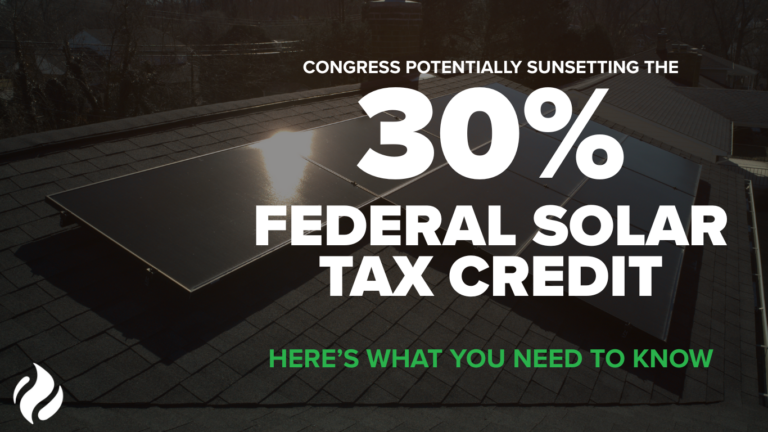Solar-Powered Commercial Buildings in Washington DC
Have you ever wondered how your daily choices impact both your wallet and the world around you? Imagine a future where you not only save money but also play a vital role in protecting the environment.
Talk to the experts at Lumina Solar about Commercial Buildings With Solar Panels In Washington Dc today!
Are you looking to reduce your electricity bills while contributing to a greener future? The adoption of renewable energy solutions is on the rise, especially in urban areas like Washington DC. Innovative solar installation projects are transforming the way properties harness power, offering both financial and environmental benefits.

Washington DC has set ambitious renewable energy goals, and solar technology plays a key role in meeting these commitments. Projects like Washington Square and 20 M showcase the potential of bifacial panels and canopy systems, generating hundreds of thousands of kWh annually. These systems not only lower carbon footprints but also improve efficiency for property owners.
With federal incentives and streamlined permitting processes, now is the perfect time to explore solar solutions for your property. Whether you own a small office or a large complex, investing in solar can provide long-term benefits and a competitive edge. Ready to take the next step?
Overview & Background
Washington DC is leading the charge in renewable energy adoption. The city has set an ambitious goal to achieve 50% renewable energy by 2032. This commitment is driving the adoption of solar installation projects across the area, particularly on commercial properties.
These projects not only reduce electricity costs but also lower carbon emissions. With supportive policies like the DC Sustainable Energy Utility rebate program, property owners can access financial incentives to offset installation costs. The streamlined permitting process with PEPCO further simplifies the transition to solar.

Key players like Lerner Corporation and Universal Renewables are at the forefront of this movement. Their innovative solutions are helping businesses harness solar energy efficiently. From rooftop arrays to canopy systems, these installations are transforming the way properties generate power.
The regulatory framework in DC ensures that solar projects meet zoning and utility interconnection requirements. This creates a seamless process for property owners to adopt renewable energy. With federal tax credits and local programs, the investment in solar is more accessible than ever.
As we delve into specific case studies, you’ll see how these initiatives are making a tangible impact. From reducing operating costs to meeting sustainability goals, solar installations are a win-win for businesses and the environment.
Commercial Buildings With Solar Panels in Washington DC: In-Depth Case Study
Discover how cutting-edge systems are revolutionizing energy generation in urban areas. The Washington Square project is a prime example of innovation in action. This solar installation features a 522 kW system with 1,290 panels, producing over 650,000 kWh annually. The use of recycled aluminum canopy systems by Universal Renewables highlights the project’s commitment to sustainability.
One of the standout features of this project is the integration of bifacial panels. These modules can increase output by 5-6%, ensuring maximum efficiency. The thoughtful design and technology integration helped the system exceed its initial performance targets.
The decision to adopt a self-financed, direct ownership model was strategic. This approach allowed the property owner to retain full control over the system and its benefits. With federal incentives and local programs, the financial burden was significantly reduced.
This case study demonstrates how advanced solar energy solutions can transform properties. From reducing electricity costs to lowering carbon footprints, the benefits are clear. Ready to explore how your property can achieve similar results?
Decision-Making Process & Strategic Planning
Strategic decision-making is key to maximizing the benefits of solar installations. When planning your project, the first step is evaluating contracting models. Options like leases, power purchase agreements (PPAs), and direct ownership each have unique advantages. A thorough analysis helps you choose the best fit for your goals.
Financial incentives play a significant role in shaping your investment. For example, Lerner’s analysis of tax credits and solar renewable energy certificates (SRECs) influenced their decision to self-finance. These programs can offset costs and improve the long-term benefits of your system.
Collaborating with experts ensures a smooth process. Sustainability consultants like Gregorio Sustainability helped draft RFPs and evaluate engineering proposals. Their expertise ensures your project aligns with industry standards and your company’s objectives.
Strategic planning also involves aligning your installation with available tax benefits. This approach not only reduces upfront costs but also enhances the overall return on investment. A systematic process ensures your solar energy project succeeds in competitive markets.
By focusing on these steps, you can create a program that meets your needs and delivers lasting value. Ready to take the next step toward a sustainable future?
Coordination and Stakeholder Engagement
Effective coordination is the backbone of any successful energy project. Early engagement with stakeholders ensures that every step, from planning to execution, runs smoothly. This approach minimizes delays and maximizes efficiency.
Sustainability consultants like Gregorio Sustainability play a crucial role. They assess on-site options and provide insights into the best installation strategies. Their expertise ensures that your project aligns with both financial and environmental goals.
Multiple stakeholders contribute to the success of these initiatives. Engineering teams focus on design and system integration, while property managers oversee logistics. Utility companies like PEPCO handle interconnection processes, ensuring seamless integration with the grid.
Clear communication and collaboration are essential. Regular meetings and training sessions keep everyone aligned. This reduces misunderstandings and ensures that the project stays on track. The result is a streamlined process that delivers tangible benefits.
By involving all parties early, you can navigate permitting and utility challenges effectively. This collaborative effort not only speeds up the process but also enhances the overall efficiency of your installation. Ready to see how this approach can work for your property?
Project Execution: Design and Technology Integration
Executing a project successfully requires a blend of design and technology. The transition from planning to implementation is where innovation truly shines. For example, Universal Renewables’ rooftop solar canopies nearly doubled the potential solar area, showcasing the power of thoughtful design.
Advanced technologies like telemetry and reverse power relay systems were integrated to ensure proper grid interfacing. These systems, required by PEPCO, enhance efficiency and reliability. Such innovations are essential for seamless energy generation and distribution.
Design choices also played a critical role. Elevated canopy systems improved maintenance access and protected rooftop equipment. This approach not only maximizes electricity output but also extends the lifespan of the system.
Expert EPCs (Engineering, Procurement, and Construction firms) were instrumental in bringing together design, engineering, and regulatory compliance. Their expertise ensured that the project met all utility and zoning requirements, minimizing delays and maximizing benefits.
By focusing on innovative design and advanced technology, you can transform your building into a model of efficiency and sustainability. Ready to see how these solutions can work for you?
Benefits and Challenges of Onsite Solar Adoption
The shift to solar energy offers significant advantages but isn’t without challenges. One of the most compelling benefits is the reduction in electricity bills. With a payback period of around four years, the financial savings are substantial. Operational costs drop further due to reduced demand charges and SREC sales.
Rooftop canopy installations improve building efficiency and operational flexibility. These systems maximize space usage while protecting rooftop equipment. This design extends the lifespan of the system and enhances its performance.
However, challenges like lengthy utility interconnection delays can slow progress. Meeting strict PEPCO requirements often necessitates specialized upgrades. These hurdles can extend timelines and increase costs.
On the environmental front, onsite solar significantly reduces scope 2 carbon emissions. This aligns with sustainability goals and improves your property’s green credentials. The broader impact includes cleaner air and a smaller carbon footprint.
Effective planning can overcome these challenges. By collaborating with experts and leveraging incentives, you can ensure your project succeeds. The result is a resilient, efficient, and sustainable energy solution for your property.
Conclusion
Adopting renewable solutions can transform your property’s energy efficiency. Strategic planning, stakeholder coordination, and advanced technology integration are essential for a successful project. These efforts lead to significant cost savings, enhanced electricity performance, and environmental benefits.
Challenges like utility interconnection delays can be overcome with expert project management. The result is a resilient system that aligns with sustainability goals and reduces operational costs.
Ready to take the next step? Lumina Solar offers expert guidance to help you harness renewable power effectively. Contact us today to explore sustainable solutions for your property.


